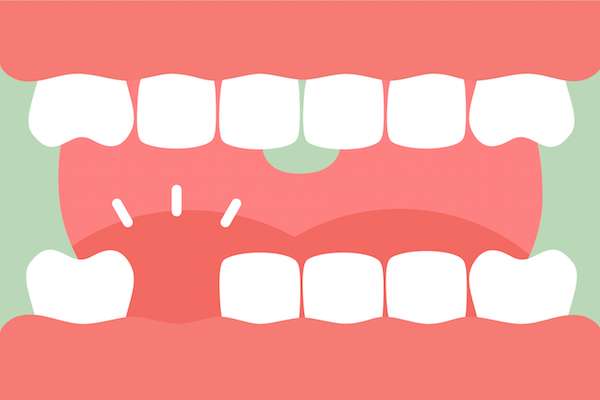Tooth extractions are some of the most common procedures that a performs. In fact, the American Dental Association includes extractions on its list of most frequently reported dental procedures. Because many patients undergo this treatment, it is important to understand when it is needed. Because patients should play a key role in their own dental health, the dentist and patient should always have a clear discussion about available options before choosing any treatment. In this way, the patient can feel confident about seeking necessary care.
3 times a family dentist recommends extracting a tooth
A family dentist typically recommends pulling a tooth when it is deemed nonrestorable, causing obvious infection, or causing an alignment problem.
1. Severe decay
When a cavity gets so large that it can no longer be restored, an extraction is the only option. In some cases, the tooth may be badly broken, and often, only the root tips are left. A family dentist recommends removing teeth in this condition because they are simply sources for infection to take hold. There are a number of restorative options available for missing teeth, and the patient can discuss these with the dentist before extraction. A severely decayed tooth is usually unsightly, so patients are often eager to have it removed and replaced.
2. Infection
Although dental infections are somewhat common, these can be quite dangerous if left untreated. If a family dentist detects a badly infected tooth, they may recommend an extraction. Dental infections are often detected by an X-ray. The patient usually presents with a toothache, but sometimes, the infection causes no symptoms at all. The infection can drain into the mouth, and many patients report a foul taste. An infection may arise from a decayed tooth, or it can happen after some type of trauma to the area. Antibiotics may be prescribed before extraction to reduce the amount of infection, but this is left to the dentist's discretion.
3. Crowding
Patients who are interested in orthodontics may need some extractions if the teeth are too crowded. The first premolars are the most common teeth to be removed for orthodontic treatment. These extractions are sometimes required for both traditional braces or clear aligner therapy. Patients should discuss the benefits of extractions for straighter teeth but should also know what the results will be like if certain teeth are not extracted. In some cases, adolescents may have retained baby teeth. These must be removed before or during orthodontic therapy to allow the permanent teeth to erupt correctly.
Conclusion
Every patient is unique, and a family dentist may recommend extractions for many reasons. The important thing is that patients understand why pulling a tooth is necessary and what care will be needed after the procedure. Patients concerned about oral health should visit a dentist for a comprehensive treatment plan. Dedication to good oral health is an important step in overall health.
or call Contour Dentistry at 704-896-6160 for an appointment in our Cornelius office.
Related Posts
Maintaining good oral health involves more than just brushing and flossing regularly. Your diet plays a significant role in the health of your teeth and gums. In this article, we will explore the connection between what you eat and your dental health, and provide tips for a diet that promotes strong teeth and a bright…
Many people get the majority of dental care from a family dentist. These types of dentists are tasked with maintaining patients' oral health and may perform a variety of procedures to do so. From cleaning to crowns to exams, family dentists can cover the essentials of oral health. These are some of the most common…
One of the main reasons people typically visit a family dentist is to get a cavity check. The American Dental Association states that 91% of adults in America over the age of 20 have had at least one cavity. Generally included in each six-month wellness examination, a cavity check can help both identify areas where…
